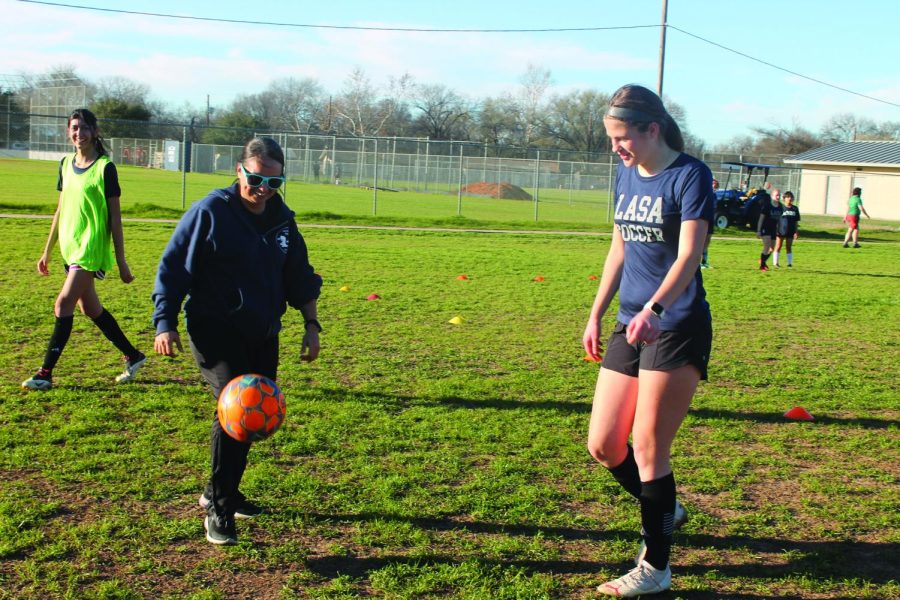Coach Me If You Can
kayla
TALKING WITH YOUR FEET Girls soccer coach and tennis coach Alicia Salinas shows soccer player how to juggle the ball. Salinas, who is one of LASA’s welness counselors, coaches alongside Chloe Cardinale, one of the Great Ideas teachers. photo by Kayla Le
March 6, 2023
Coaching a sport can be incredibly challenging, according to LASA’s head swim and dive coach Christopher Parks, with responsibilities ranging from just coaching the sport all the way to team management and organization. Some of LASA’s coaches balance coaching a sport while teaching a completely different subject in their classroom.
As well as being head coach for the swim and dive team, Parks is also the German teacher. In a given week, Parks said that his coaching job requires that he work an additional eight to ten hours.
“It’s a pretty big commitment,” Parks said. “Realistically, the easiest and the smallest part of the job is the actual coaching, so going to practices and giving feedback to athletes. I think, really, the title should be coach/project manager. That’s where a lot of the time is spent.”
Parks mentioned that the biggest thing he keeps in mind while managing his time is the same thing he tells his students, which is to not create extra work for himself or to overcommit to things. He uses many ideas and skills he learns from coaching and applies them to help his students in his classroom.
“A lot about how you get real skills with a language not just has knowledge that you can recite, and memorize, but actual abilities to talk,” Parks said. “It’s a lot like a sport. You have to practice. You have to train. You have to exercise a certain part of your brain.”
World Geography teacher and Baseball coach Eric Martanovic said that he does not see much distinction between coaching and teaching in that both have their own learning objectives, routines, and procedures. To him, teaching involves encouragement and positivity, and coaching involves fostering individual talents and efforts.
“Athletics enriches academics,” Martanovic said. “In coaching, you have to take the individual qualities, or effort, of the player and build on that by acknowledging and accepting their positive contributions. When applied in the classroom, this builds not only confidence within but a rapport with the student wherein they feel comfortable to grow.”
Great Ideas teacher and Girls’ Soccer coach Chloe Cardinale agreed that academics and athletics work hand in hand. According to her, for some students, doing a sport during high school can be another important outlet.
“For a kid who doesn’t necessarily want to do a lot or is not really motivated academically, wanting to play a sport keeps them in the classroom,” Cardinale said. “A kid that’s maybe really hyper focused on only school, getting them to look outside of that, play a sport or do something where they can exercise and decompress, and help them with that balance.”
Overall, Cardinale said teaching another sport can be very demanding, almost like another full-time job added onto six other classes. She has to schedule and plan activities during the season and find time to think ahead for the next season as well.
“But I really do like it,” Cardinale said. “Getting to know the kids and having a team outside of the classroom, like a group of kids that you see in the hallway and you guys are all working towards a common goal, is rewarding.”



